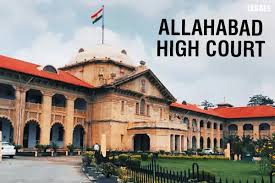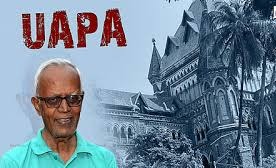Waikar, J.@mdashThis is a reference made by the learned single judge in Civil Revision Application No. 375 of 1980, as there are conflicting decisions of the learned single Judges of this Court on the question whether the Agricultural Lands Tribunal, (hereinafter called ''ALT''), under the Bombay Tenancy and Agricultural Lands (Vidarbha Region) Act, is competent to make a reference and whether the reference answered by the Officer is valid and legal?
2. In the present case, the issue arose this way. Deceased Kasabai was the holder of the land in question and during her lifetime, suo motu proceedings for transfer of ownership of the field were started. Sukhdeo, (the present defendant) contended that he was a tenant, while the contention of the landlady was that he was taken as a partner in cultivation by her. This issue was decided by the ALT holding that he was a tenant. In the appeal that was preferred, the Special Deputy Collector observed that the ALT had no power to decide the status of the defendant as a tenant and it should make a reference to the Tenancy Tahsildar. In accordance with this order after remand, the ALT framed an issue and referred the same to the Tenancy Naib Tahsildar. The Tenancy Naib Tahsildar held that Sukhdeo was a partner and not a tenant. In view of this finding, the proceedings before the ALT came to be dropped. There was no appeal against this finding of the Tenancy Naib Tahsildar.
3. After the death of Kasabai, her son Laxman (the present plaintiff) filed a suit for possession of the land from Sukhdeo. Sukhdeo again contended that he was a tenant and contended further tha the earlier order of reference made by the ALT and the finding pronounced thereupon by the Tenancy Naib Tahsildar are without jurisdiction.
4. The trial Court upheld the contention of the defendant relying upon some pronouncements of this Court. It, therefore, proposed to refer the issue of alleged tenancy of the defendant to the Tenancy Court under the provisions of S. 125 of the Act.
5. The learned single Judge who heard the revision preferred against the above order, made the present reference in view of the conflicting views, on the point, of several single Judges of this Court.
6. In Chotmal v. Bhala, 1967 Mah LJ 7, D. B. Padhye J. observed that whenever such a question arises, the matter has to be referred to the Tahsildar and the ALT has no power to decide such a question. The ALT, it was observed, should have referred the issue for decision to the Tahsildar. In a later decision reported in Darubai v. Gangaram, 1974 Mah LJ 89, the same learned single Judge, however, took a different view. The ALT was also a Tahsildar and it had referred the issue to itself and having answered it against the tenant, the proceedings were dropped. In appeal, the Sub-Divisional Officer set aside the order and remanded the matter. In revision, the Maharashtra Revenue Tribunal held that the ALT could not refer the issue to itself but could itself deal with the issue without making any reference. The learned single Judge held that the decision of the issue by the ALT in its capacity as a Tahsildar was not vitiated and wiped out and it could not be ignored. The remand of the case by the Maharashtra Revenue Tribunal was thus held unjustified.
7. In Punamchand Balkisanji v. Gulabrao Vithobaji, 1969 Mah LJ 20, Justice N. L. Abhyankar observed that where the Presiding Officer of the ALT is a Tahsildar, he can determine the issue whether a person is a tenant or not.
8. In Kisan Dhawaji v. Saraswatibai, 1971 Mah LJ 57, decided by Justice M.N. Chandurkar (as he then was), it was laid down as a proposition of law tha the ALT had no jurisdiction to refer the issue of tenancy in the absence of any express provisions for reference. S. 125 of the Act, it was observed, could not be invoked by the ALT as it dealt only with the bar of the Civil Court. Section 97, it was observed, did not empower the ALT to make a reference and it was further observed that when the Tahsildar is appointed as ALT he does not cease to be a Tahsildar and as such he is competent to decide the issue and he has no jurisdiction to make a reference.
9. In the later decision reported in
10. Now, it cannot be disputed that the Tahsildar and the ALT are two different distinct legal functionaries. Their duties and functions are defined. It is the Tahsildar who is competent and who is empowered under S. 100(2) of the Act to decide whether a person is or was at any time in the past, a tenant, a protected lessee or an occupancy tenant. S. 98 of the Act lays down the duties of the ALT and it does not include any such function namely, determination of the question of tenancy.
11. Mostly or rather invariably, it is the Tahsildar who is appointed by the Government to function as an ALT. S. 97(2) which deals with the constitution of a Tribunal reads thus :
"97(2). The State Government may appoint an officer not below the rank of a Tahsildar to be the Tribunal and to exercise the powers and perform the duties and functions of the Tribunal under this Act in a tahsil or taluka or any other area referred to in sub-sec. (1);
Provided that the State Government may for any area constitute a Tribunal consisting of not less than three members whom -
(a) at least one shall be a person who is holding or has held a judicial office not lower in rank than that of a Civil Judge or who is qualified to practise as a lawyer in the State of Bombay, and
(b) one shall be appointed to be the President of the Tribunal; and the Tribunal so constituted shall exercise the powers and perform the duties and functions of the Tribunal under this Act.
Explanation.-In this section ''lawyer'' means any person entitled to appear and plead for another in Court in the State and includes an advocate, a vakil and an attorney of the High Court of Maharashtra."
12. Thus the possibility of any officer above the rank of a Tahsildar being appointed as ALT cannot be ruled out. The Tribunal can as well consist of three or more members. If the question whether a person is a tenant or not arises before such a Tribunal, obviously it cannot itself decide that question and a reference to the competent authority (i.e. the Tahsildar) could be incompetent in the absence of any provision as observed in Darubai''s case. There would be a perpetual stalemate and a deadlock in the proceedings. We thus find that in view of the Explanation to S. 125 of the Act which says that for the purpose of this section, a Civil Court shall include a Mamlatdar''s Court constituted under the Mamlatdars'' Court Act, 1906 and S. 102 which lays down the procedure to be followed by the Tahsildar or Tribunal, ALT is a Civil Court for the purposes of S. 125 and it is competent to make a reference.
13. It is true that when the Tahsildar happens to be the ALT, normally a reference by him, acting as ALT to himself in his capacity as Tahsildar, may appear idle and superfluous, but when a finding on issue of tenancy is pronounced by him, he certainly does it not as an ALT (which under the Act is nt clothed with any such function), but only in his capacity as a Tahsildar. A connectional reference by one authority to the other when both are clubbed or fused in one is to be presumed in such case. An act of redundancy of a formal reference, in our view, is wrongly termed as incompetency on the part of a Tribunal when headed by a Tahsildar in all the earlier decisions. Respectfully agreeing, therefore, with the view of Jamdar J. in Dagdu''s case we find that the reference by a Tribunal to a Tahsildar is competent and legal.
14. In the present case it was the Tahsildar who also worked as ALT. In the proceedings before him an issue whether the defendant was a tenant or not was referred to the Tenancy Naib Tahsildar who decided the same. As observed, the ALT was authorised and competent to make a reference. He could himself decide the issue no doubt, but is the decision by the Tenancy Naib Tahsildar on a reference bad and illegal? is then the question.
15. Sub-sec. (30) of S. 2 of the Act says that the term ''Tahsildar'' includes a Naib Tahsildar. Therefore, the pronouncement of a finding on the issue in question by the Naib Tahsildar under S. 100(2) would be legal. As stated earlier, the Tahsildar who constituted a Tribunal could no doubt himself decide the issue in his capacity as a Tahsildar but if he chose to have a finding on the point from the Tenancy Naib Tahsildar and made a reference and the Tenancy Naib Tahsildar acting on such reference decided the issue, there is, in our view, no procedural or jurisdictional defect. Moreover, the defendant never challenged the order of the ALT making a reference or the order of the Tenancy Naib Tahsildar holding that he was not a tenant.
16. In this view of the matter, the order passed by the trial Court referring Issue No. 6 under S. 125 of the Act to the Tenancy Court was uncalled for. The said order is set aside and the trial Court shall proceed to decide the suit on the basis of the finding already pronounced by the competent authority in the suo motu proceedings.
17. Revision, therefore, is allowed with costs. Parties are directed to appear before the Trial Court on 27-4-1984.
18. Revision allowed.

